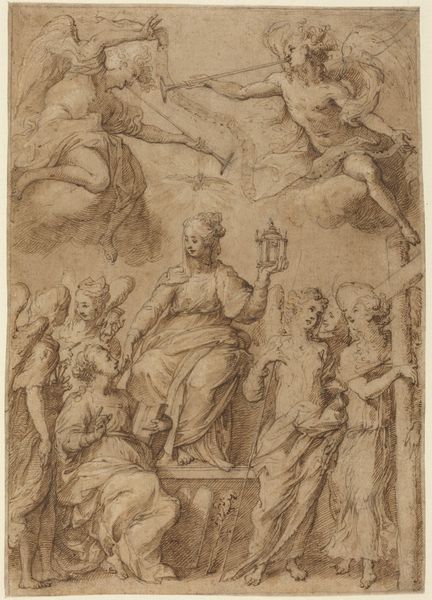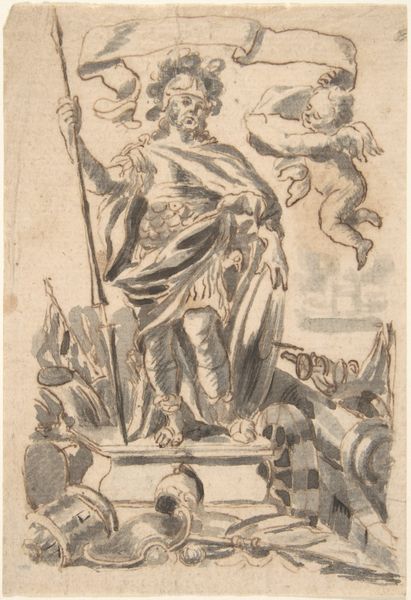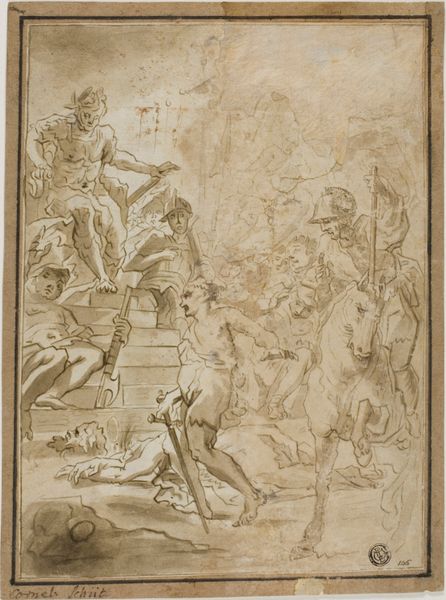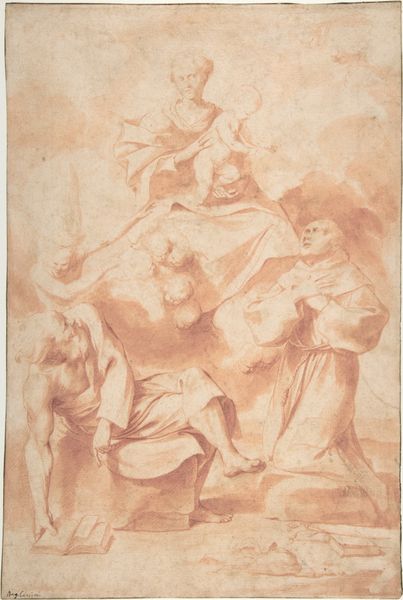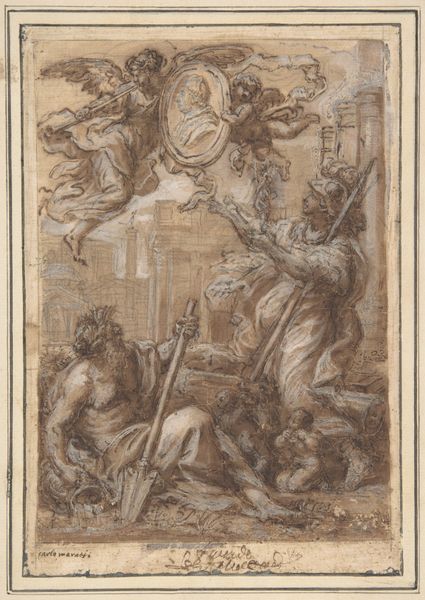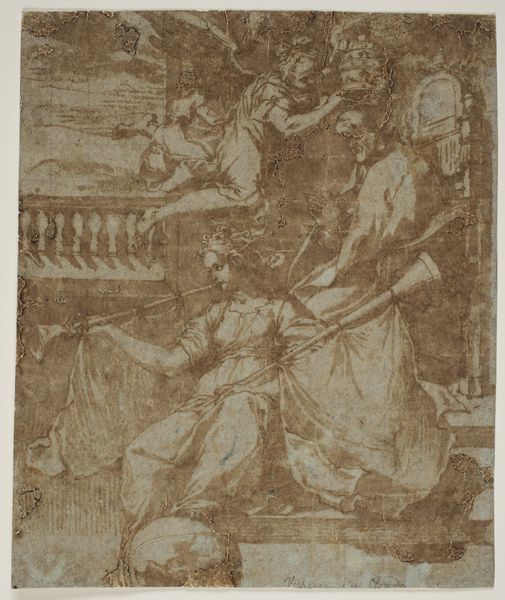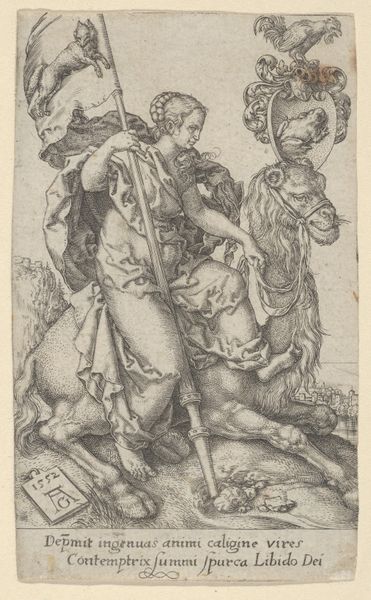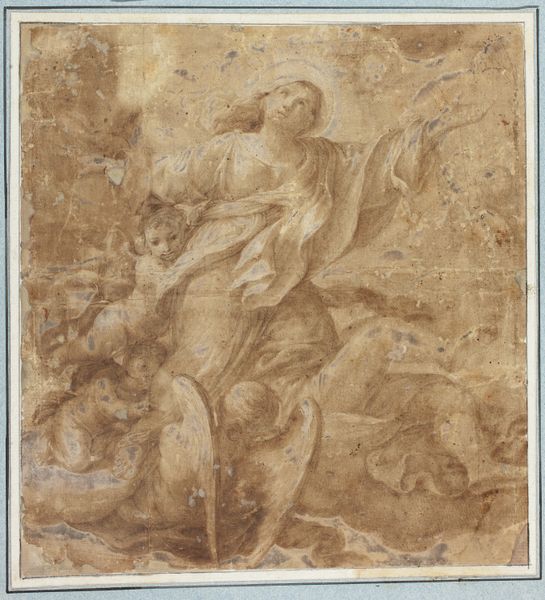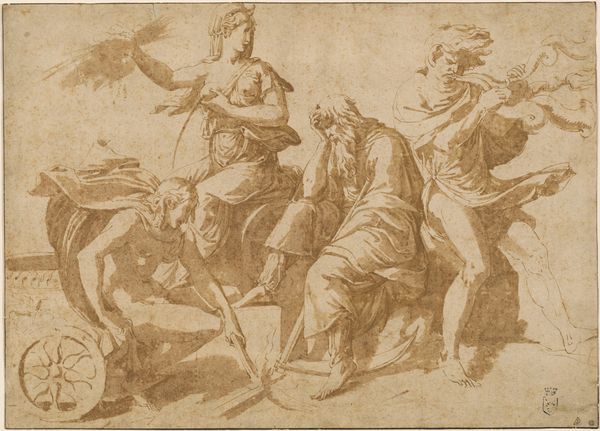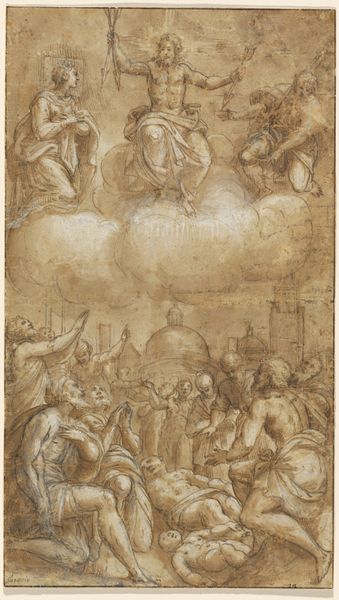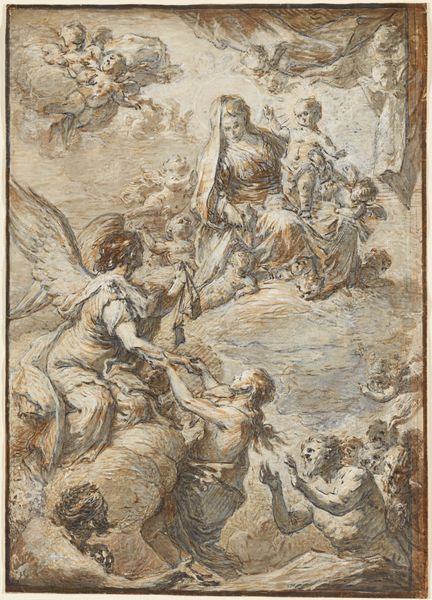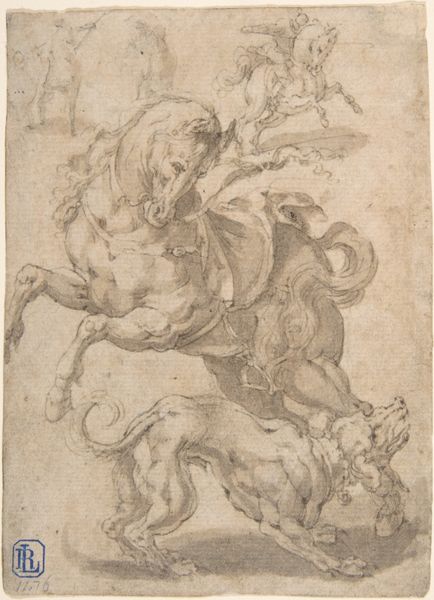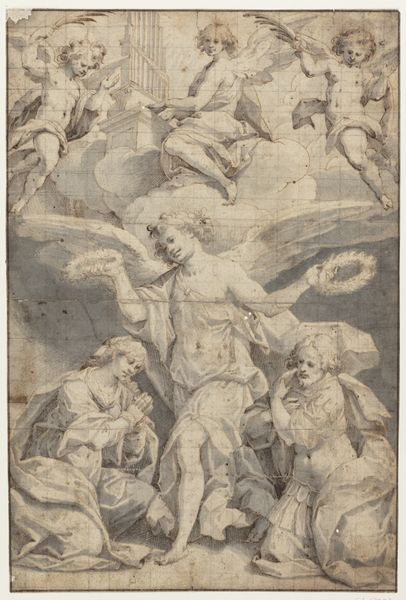
drawing, print, paper, ink, chalk, charcoal
#
drawing
#
allegory
# print
#
charcoal drawing
#
figuration
#
paper
#
oil painting
#
ink
#
chalk
#
charcoal
#
italian-renaissance
Dimensions: 245 × 175 mm
Copyright: Public Domain
Editor: Here we have Carlo Maratti's "Assumption of the Virgin," a drawing rendered in ink, chalk, and charcoal on paper. What strikes me is the upward movement, how all the figures are gazing upwards. How do you interpret this work? Curator: The upward gaze certainly commands our attention. Consider this: what does "assumption" mean in a society marked by both fervent religious belief and strict patriarchal structures? Mary's ascent isn't just a physical one, but also symbolic – it’s a reclamation of power, arguably a feminist act, within a system that often oppresses female figures. Editor: A feminist act? That's an interesting perspective. Curator: Indeed. Mary’s "assumption" defies earthly constraints and male dominated religious dogma. Look at how she's positioned – elevated, surrounded by angels, almost as if surpassing earthly authority. What does this say about the agency, or lack thereof, afforded to women in the church and society at the time? Editor: So, you're suggesting it challenges traditional power structures? Curator: Exactly! And even today, representations like these carry echoes of that challenge. Who gets to define holiness, and how is that holiness represented? Does it reinforce or subvert societal norms regarding gender and power? Those are the questions I think Maratti subtly asks us to consider. Editor: This definitely provides a fresh way to see this image. I've always interpreted this scene literally, without really thinking about it socio-politically. Curator: That’s the beauty of art – it is static, but our interpretations of it evolve as society does, allowing us to examine and re-examine cultural norms that influence gender, identity, and power.
Comments
No comments
Be the first to comment and join the conversation on the ultimate creative platform.
